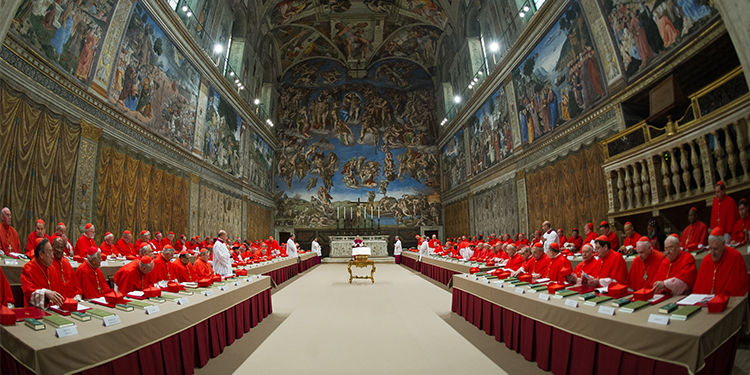At 4:15 p.m. on Wednesday, cardinal-electors proceeded into the Sistine Chapel in the Vatican to begin the sacred and secretive task of electing a new pope.
Behind the chapel’s closed doors, 133 eligible cardinals began to cast their first ballots to choose the successor to Pope Francis.
The day began with a public mass led by Cardinal Giovanni Battista Re, Dean of the College of Cardinals. But with a late start to the voting, only one ballot is expected this evening.
Around 7 p.m. Rome time, people in Vatican City will look to the chapel chimney, expecting a white smoke signaling a new pope or a black smoke signaling no decision.
If no pope is elected on Wednesday, voting will resume on Thursday with four daily rounds: two in the morning and two in the afternoon. The highly secretive process will continue until a candidate receives the required two-thirds majority.
A look at the shortest and longest conclaves
In modern times, papal conclaves have generally been swift. The 2013 conclave that elected Pope Francis concluded in five ballots over two days. His predecessor, Benedict XVI, was elected after just four ballots in under 24 hours.
That trend toward speed has held steady over the past two centuries. The last conclave to stretch beyond five days took place in 1830–31 and lasted 51 days.
Still, that was brief compared to the longest conclave in history. From April 1292 to July 1294, cardinals were locked in a stalemate that carried on for nearly three years.
The conclave ended with the election of Pope Celestine V, who resigned five months into his papacy.
In more recent history, the longest conclave was in 1740. That vote, which resulted in the election of Benedict XIV, lasted 182 days.
Conclaves in earlier centuries often moved slowly, hindered by political infighting and the absence of consensus.
Historical data from 1404 onward show many 17th- and 18th-century conclaves took several weeks. But improvements in communication, greater familiarity among cardinals, and the Church’s more global reach have helped speed up the modern process.
This year’s conclave is the first to exceed the voting limit of 120 set by Pope Paul VI in 1975. Of the 135 cardinals eligible, 133 are participating, with two absent for health reasons.
The remaining 117 members of the College of Cardinals are over 80 and not permitted to vote.
Pope Paul VI introduced the age limit to ease the burden on elderly cardinals and preserve the integrity of the process.
When Pope John Paul II died in 2005, two-thirds of electors were under 80. Today, that balance is nearly even, it reflects an aging leadership in the Church.
The current conclave is also the most geographically diverse in history, with voting cardinals representing 71 countries, reflecting the Catholic Church’s growing global reach, especially in the Global South.
If the conclave stretches to 13 days without a result, Church rules trigger a runoff. Only the two leading candidates remain on the ballot, though the winner must still secure a two-thirds majority.
Once a cardinal gets the required votes, he is asked two questions: Does he accept the election, and what name will he take?
When the pope-elect agrees, the ballots are burned, and white smoke rises to announce the decision. He then changes into papal white and appears on the balcony of St. Peter’s Basilica to greet the world.



